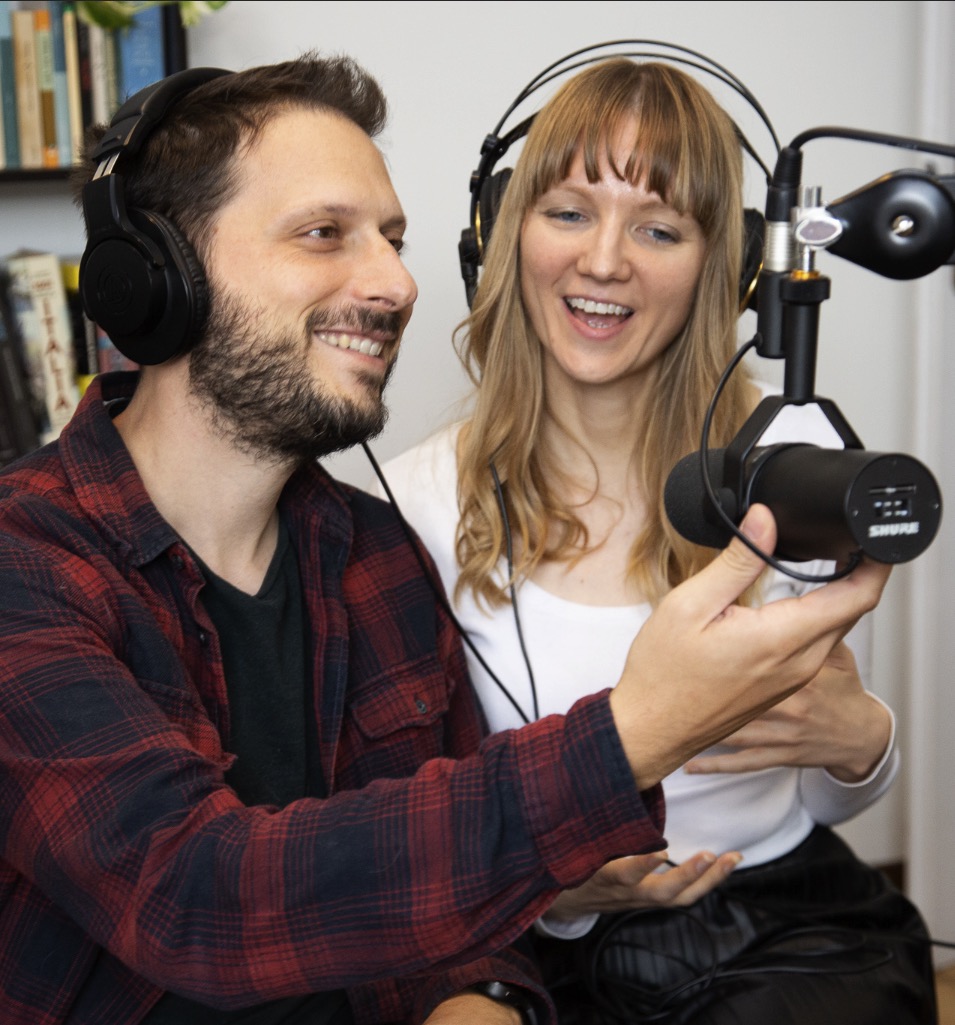You’re at the supermarket in Italy, but you don’t know where anything is! Find out how to ask for things at the supermarket, and learn some important shopping vocabulary in this episode of 5 Minute Italian.
To help you remember what you learnt in today's lesson, below you'll find bonus materials like word lists, quizzes and flashcards. But first...
Become a 5-minute Italian member (it's free!)
Learn to speak and understand Italian faster by joining the 5 minute Italian club! When you sign up, you'll get:
- Mini Italian lessons + bonus materials delivered to your inbox.
- Access to the private Facebook group where you can practice chatting in Italian.
- Invites to free speaking workshops.
If you'd like to join us, click here to become a member of 5 Minute Italian.
Bonus Materials
Remember and practice using what you learnt with the bonus materials for today's episode.
Today's Italian words
Il commesso = shop assistant
Mi scusi = excuse me
Dove sono = where are
I carrelli = the trolleys
Sono lì/là = they are there
Lì/là = there
All’entrata = at the entrance
A = at (also to)
La = the (for feminine nouns)
"A" combines with "la" to give us “alla” = at the
La banana = the banana (singular)
Le banane = the bananas (plural)
Con = with
La frutta = the fruit
Dov’è = where is
La pasta = the pasta
Di là = over there
Signora = madam/ma’am
Quale corridoio = which aisle?
Vicino = near
Vicino al pane = close to the bread
A = to (also at)
Il = the (for masculine nouns)
"A" combines with "il" to give us "al" = to the
Il pane = the bread
Take the Quiz!
How much did you learn? Find out in the 5-minute Italian quiz!
Click here to take the quiz for this episode: How to find things in supermarkets
Italian flashcards
Remember the vocabulary from your 5 Minute Italian lessons by downloading the digital flashcard pack.
- Download the flashcards: How to ask for things in supermarkets
- Not sure how it works? Click here to watch the tutorial.
Transcript
Please note, this is not a word for word transcript
Katie: You’re at the supermarket in Italy, but you don’t know where anything is. Find out how to ask for things at the supermarket, and learn some important shopping vocabulary in 5 Minute Italian episode 26.
Ciao a tutti e benvenuti a 5 minute Italian, hi everyone and welcome to 5 minute Italian. I’m Katie…
M: And I’m Matteo. Ciao.
K: And in today’s lesson, we’re going to learn how to find our way around an Italian supermarket. We’re going to start with a little dialogue in Italian. Listen and see how much you can make out, then we’ll talk you through the details after.
Imagine you’re in the supermarket, but you don’t know where anything is. So you go up to the poor shop assistant, il commesso, and you start asking loads of questions.
Katie: Mi scusi, dove sono i carrelli?
Matteo: Sono lì, all’entrata.
Katie: OK grazie. E… dove sono le banane?
Matteo: Lì, con la frutta.
Katie: Perfetto. E...Dov’è la pasta?
Matteo: È di là, signora.
Katie: Grazie… quale corridoio?
Matteo: Corridoio 5, vicino al pane.
Katie: So we started with mi scusi
Matteo: Mi scusi
Katie: Mi scusi, is the formal way of saying “excuse me” with people who you don’t know very well, like shop assistants. You can also use it to say sorry, for example if you get in someone’s way, you can say mi scusi or just scusi.
Matteo: Then you heard: dove sono i carelli? which means “where are the trolleys?”.
Katie: Dove means “where”, sono means “are” and i carrelli means “the trolleys”
Matteo: Dove sono i carrelli.
Katie: Then your heard sono lì, all’entrata.
Matteo: Which means “they’re there, at the entrance”. Sono lì, all'entrata.
Katie: We know that sono means “are”. Italians often omit the word for they. So instead of saying “they are there”, they just say “are there” Lì means there. So you can imagine him pointing and saying “there” - lì.
Matteo: Sono lì. You might also hear the word là, which means the same thing. To say “there” you can either say lì or là. They’re interchangeable.
Katie: Then you heard all’entrata which means “at the entrance”. The word all' means “at the”. And entrata means entrance
Matteo: All’entrata.
Katie: And this “all” is interesting - “a” means “at” and “la” means “the” for feminine words, like entrata. In Italian, "a" and "la" combine together to give us alla. So to say at the for feminine words you’d get alla.
Matteo: But when alla comes before a word which starts with a vowel, we remove the last “a” sound. So you get all’entrata.
Katie: Next, I said dove sono le banane which I’m sure you can guess means “where are the bananas?”
Matteo: Dove sono le banane?
Katie: Then Matteo replied…
Matteo: Lì, con la frutta.
Katie: We know that lì means “there”. Con means “with”. And la frutta means the fruit.
Matteo: Then Katie said: perfetto which of course means “perfect. You should say it with a nice Italian accent: perfetto!
Katie: Then I asked: dov’è la pasta, which means “where’s the pasta”.
Katie: Next, Matteo said...
Matteo: è di la, signora. Which means “it’s over there madam”
Katie: Di là is quite similar to “là” which means there. Maybe the only difference is that lì or là gives more of an impression of a specific place, so maybe you’re pointing to a specific point while you’re saying it, while di là is more of a general direction. Over there, di là.
Matteo: And then I called you Signora, which is the word you use for women.
Katie: It’s like saying “ma'am” or “madam”, and Italians use it frequently. And I’m very sad about this because in the last few years people have stopped calling me signorina, which is used with girls and young women, and started calling me signora.
Matteo: Then you heard grazie - quale corridoio.
Katie: Quale, means “which” and corridoio means aisle. And this word is nice and easy to remember because it sounds like corridor - so you can imagine the aisle as being a bit like a corridor.
Matteo: corridoio.
Katie: Then Matteo said…
Matteo: corridoio 5, vicino al pane.
Katie: Corridoio 5, of course, means corridor 5. Then you heard vicino al pane which means “close to the bread”.
Matteo: Vicino means close and il pane means “the bread”.
Katie: Then we’ve got this word al, which is interesting because it’s similar to what we were saying before when we talked about all’entrata at the entrance. “a” in Italian means at, but it also means “to”. Then we have “il” which means “the” for masculine nouns. The bread - il pane. So to say “to the”, we say “a + il”
Matteo: “a” and “il” combine together to make al.
Katie: So how do you say close to the bread?
Matteo: Vicino al pane
K: That’s all we have time for today, thanks for listening. And if you’d like to get more mini Italian lessons delivered to your inbox, don’t forget to subscribe by following the link below. Grazie, and ciao for now, see you next time, or as we say in Italian, alla prossima!
Get more 5-minute Italian
To get more 5 minute Italian, including lessons delivered to your inbox, access to the private Facebook group and invites to speaking workshops, click here to become a 5 Minute Italian member.

